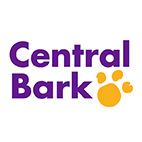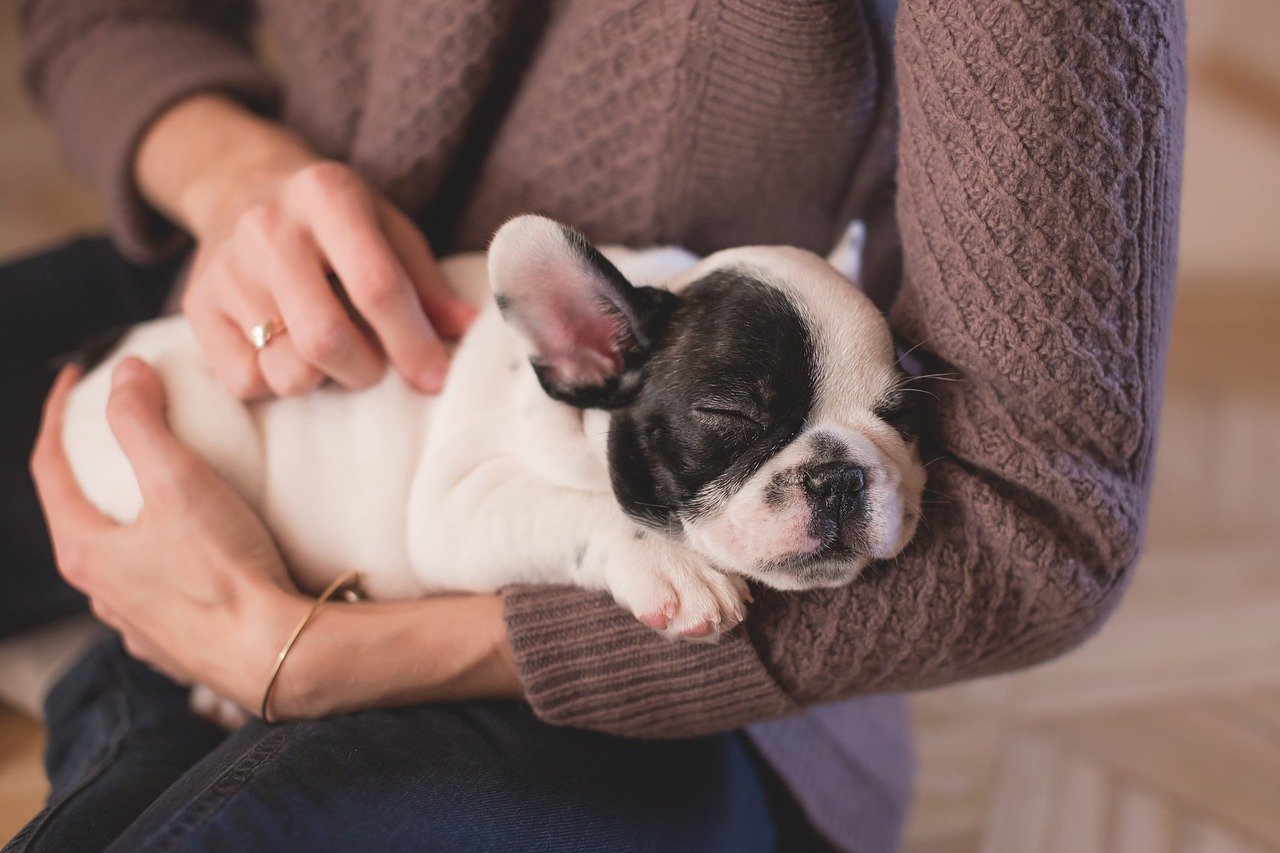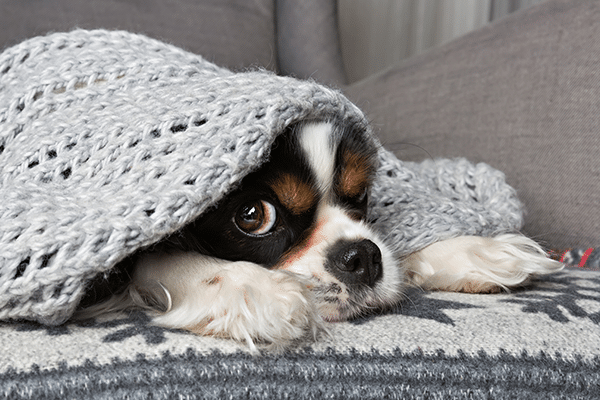Tricks and tips for bringing home a new puppy
Bringing home a new puppy is an incredibly exciting time, filled with the promise of a new best friend and loving family member. The transition of leaving their littermates (and everything they’ve ever known!) is a massive one, so taking some steps to ensure that the transition home is as smooth and stress-free for both the humans and the puppy is important. Here are a few of our favorite tips and tricks for helping your puppy settle in.
1. Set up their space in advance
Be sure to set up a puppy safe space before they come home! You’ll want the space to be big enough for a comfortable bed, food and water dishes, toys, and enrichment items. This should ideally also be a space where the flooring is not absorbent (like the kitchen). You might use baby gates to section off the space or use one or two puppy pens to create a defined space for your new puppy. You should also have their crate in this space, make their crate an inviting space for your puppy to rest in as they choose. This puppy safe space will be an area that they go in when you cannot directly supervise them, when you leave the house or when your puppy needs a break to rest or relax (or you need a break from them!).
2. Keep the first few days quiet
It is incredibly tempting to invite friends and family members over the moment that your puppy comes home. Remember, though, that your puppy’s entire world has been turned upside down! Try to keep the first few days quiet while you help them adjust to the new space, begin potty and crate training, and begin to build a relationship with them. After a few days, if they’ve been comfortable and successful with their new routine, begin inviting a few friends over at a time but try to be cognizant of not overloading them!
3. Naptime is important
According to the National Sleep Foundation and the American Kennel Club, adult dogs typically spend up to 14 hours a day sleeping, while puppies spend up to 20 hours a day sleeping. This means that your puppy needs LOTS of naps! Some puppies will self-regulate quite a bit, while others will play and play without interruption. When puppies become overly tired, we often see a significant increase in mouthing behaviors, frustration barking, and an overall decrease in their gentleness. If your puppy isn’t regularly napping throughout the day, be sure to put them in their safe space on a regular basis to facilitate nap times. If they need additional support settling, provide your puppy with a self-soothing enrichment item like a LickiMat or Kong with a bit of peanut butter, plain yogurt, or canned dog food spread in it. Licking reduces stress which can help your puppy to relax when separated from you and confined to their safe space.
4. If you are bringing home a new puppy – create a schedule!
Prior to bringing a puppy home, be sure to pre-plan your puppy care schedule! Remember, potty training and crate training takes time and the necessary investment, in the beginning, is significant. You’ll need to be sure to plan to spend more time at home than you may typically, come home over lunchtime to spend time with the puppy, invest in a dog walker or have your puppy stay with a trusted pet care provider, and spend your nights at home until the puppy is ready to be left alone for longer periods of time.
5. Plan your socialization protocol
We all know that socialization is incredibly important for our young puppies but the window for socialization closes quickly! Be sure to have a family conversation about how you’ll support your puppy with this important piece of their development. Scheduling weekly outings to safe new spaces in advance will help you stay on track with your socialization goals, the first few weeks of puppy raising will fly by before you know it! Check out our “Puppy Socialization” blog for more ideas.
6. Use daily enrichment
Mental enrichment is an excellent way to wear out our young puppies and promote relaxation. Studies have shown that licking and sniffing lower heart rate and respiratory rate. This means that if your puppy needs a nap, confining them with a filled Kong (or similar item) is a great way to support them with settling and relaxing. You can use these items throughout the day to support them with relaxing during family mealtimes, when visitors come over, during family TV time, and more. Be sure that before bringing home a new puppy, you have a freezer full of several filled enrichment items and several puzzle toys or treat-dispensing toys ready to go for when you need them!
7. Healthy exercise matters
Physical exercise is important for puppies but we have to be sure we’re keeping their growing bodies safe. Low-impact exercise like swimming can be a great way to exercise our puppies. The first several times your puppy swims they should be wearing an appropriate fitting lifejacket. Scheduling a session at a dog pool is a great way to ensure they’re swimming safely. Puppies should swim with assistance until they are able to enter and exit the pool on their own. Another great form of exercise is puppy-directed walks on a longline. You can take your puppy for fun walking adventures at safe parks where there are open fields or trails to explore. Just be sure to have your puppy in a back-clip harness for their safety and keep hold of their longline at all times. Keep your walk short, enthusiastic puppies will often push themselves past their physical limit and wind up overtired and sore. You may have to stop long before your puppy shows signs of fatigue (your goal is not complete physical exhaustion!). This healthy exercise will help your puppy to settle more restfully at home.
8. Enlist the help of a professional
For all puppy owners, enlisting the support of a professional dog trainer can be a huge asset. From supporting you with the nuances of an effective daily schedule to navigating common puppy behavior concerns, a talented professional dog trainer can be immensely helpful in your puppy-raising journey. For in-person puppy classes be sure to reach out to your local Central Bark for a class schedule!

Remember, this transition is a lot to undertake, for you AND your puppy! Taking the time to pre-plan how you will support your puppy’s transition into your family will set you up for success. Have fun, plan ahead, and enjoy your time with your adorable new family member! Thinking about adoption? check out this blog for some tips.






